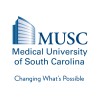Optimizing Current and Electrode Montage for Transcranial Direct Current Stimulation in Stroke Patients (COBRE_JIpro3)
Stroke

About this trial
This is an interventional treatment trial for Stroke focused on measuring Transcranial Direct Current Stimulation, tDCS
Eligibility Criteria
Inclusion Criteria:
- 18-80 years old with a first-ever ischemic stroke that occurred at least 6 months ago;
- Finished rehabilitation therapy(including inpatient or outpatient Physical Therapy (PT) / Occupational Therapy (OT) / Speech Therapy (SP)) at least one month ago;
- Unilateral limb weakness with Fugl Meyer-Upper Extremity Scale score less than 56 (out of 66);
- Motor Evoked Potentials (MEP) is inducible on abductor pollicis brevis (APB) muscle on the affected side by TMS.
Exclusion Criteria:
- Primary intracerebral hematoma, or subarachnoid hemorrhage,
- Bihemispheric ischemic strokes;
- History of prior stroke or old infarct demonstrated on the CT or MRI or documented in medical records;
- Other concomitant neurological disorders affecting upper extremity motor function;
- Documented history of dementia before or after stroke;
- Documented history of uncontrolled depression or psychiatric disorder either before or after stroke which could affect their ability to participate in the experiment;
- Uncontrolled hypertension despite treatment, specifically Systolic blood pressure (SBP)/ Diastolic Blood Pressure (DBP) >= 180/100 mmHg at baseline;
- Presence of any MRI/tDCS/TMS risk factors: a) an electrically, magnetically or mechanically activated metal or nonmetal implant including cardiac pacemaker, intracerebral vascular clips or any other electrically sensitive support system; b) non-fixed metal in any part of the body, including a previous metallic injury to eye; c) pregnancy, since the effect of tDCS on the fetus is unknown; d) history of seizure disorder or post-stroke seizure; e) preexisting scalp lesion, bone defect or hemicraniectomy.
Sites / Locations
- Medical University of South Carolina
Arms of the Study
Arm 1
Arm 2
Experimental
Experimental
Determine the Optimal tDCS current
Determine the optimal tDCS electrode montage
We will invesitigate the optimal curent in range of 1 mA to 4 mA. We hypothesize that 4 mA is tolerable, safe and can induce the highest level of cortical excitability in the lesional motor cortex.
We hypothesize that the bi-hemispheric stimulation with anodal stimulation on the lesional hemisphere and simultaneous cathodal stimulation on the non-lesional hemisphere induces more cortical excitability in the lesional hemisphere than either anodal stimulation on the affected hemisphere or cathodal stimulation on non-lesional hemisphere alone.
Outcomes
Primary Outcome Measures
Secondary Outcome Measures
Full Information
1. Study Identification
2. Study Status
3. Sponsor/Collaborators
4. Oversight
5. Study Description
6. Conditions and Keywords
7. Study Design
8. Arms, Groups, and Interventions
10. Eligibility
12. IPD Sharing Statement
Learn more about this trial
